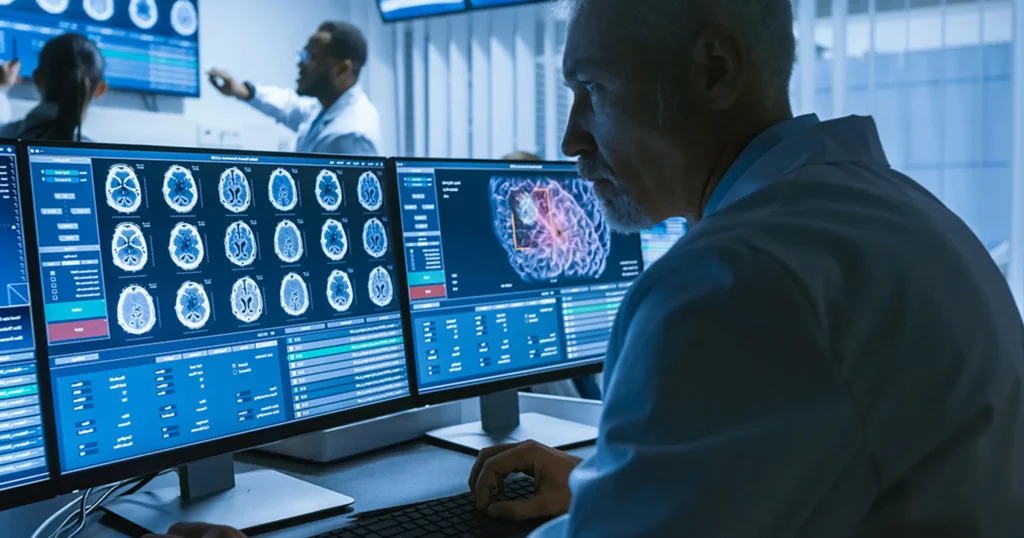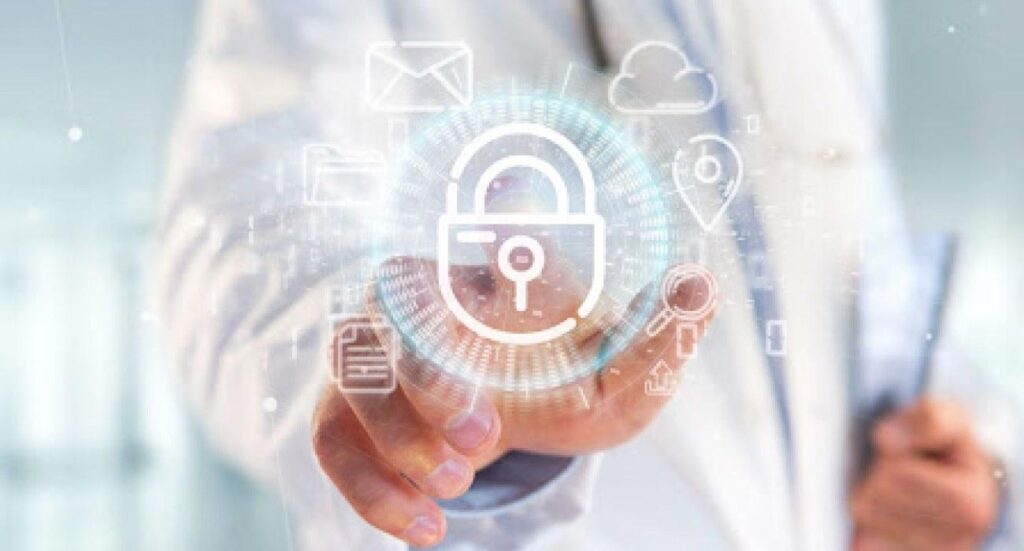In the current landscape of advancing healthcare technologies, the transformation of patient care through digitalization underscores the critical importance of cybersecurity. The adoption of digital tools, ranging from electronic health records to telemedicine platforms and the integration of Internet of Things (IoT) devices, offers substantial advantages, enhancing the efficiency and accessibility of healthcare services. Nevertheless, this surge in technological adoption brings with it an augmented susceptibility to cybersecurity threats, exposing healthcare systems to potential breaches and data compromises.
The indispensable role of cybersecurity in the healthcare sector becomes evident as we analyze the evolving challenges that emerge in tandem with technological integration. The interconnectedness of systems and the reliance on digital solutions necessitate a proactive approach to safeguard sensitive patient data. Addressing concerns related to data breaches, unauthorized access, and potential disruptions to healthcare operations requires a comprehensive understanding of the intricacies involved in securing healthcare information systems.
Moreover, integrating primary care EHR into cybersecurity protocols enhances the protection of patient information across various healthcare settings, ensuring the integrity and confidentiality of medical records within primary care practices.
This article aims to explore innovative strategies and cutting-edge solutions that can empower the healthcare industry to fortify its cybersecurity defenses. By delving into the intricacies of cybersecurity challenges specific to healthcare, we strive to illuminate the path toward ensuring the utmost protection for patient data. In the face of an ever-evolving digital landscape, understanding the nuances of cybersecurity is paramount to sustaining the integrity, confidentiality, and availability of healthcare information, thereby preserving the trust and well-being of patients.
The Digital Transformation of Healthcare:

Source: theaccessgroup.com
The digitization of healthcare has inaugurated an era marked by heightened efficiency, expanded accessibility, and personalized treatment approaches. Electronic Health Records (EHRs) facilitate seamless information sharing among healthcare providers, while telemedicine broadens access to care, and IoT devices monitor and transmit patient data in real-time. These innovations undeniably elevate the standard of patient care; however, they simultaneously introduce new vulnerabilities. Malicious actors may exploit these digital avenues, underscoring the imperative nature of prioritizing cybersecurity in the healthcare industry. Safeguarding patient data and ensuring the integrity of healthcare information systems are paramount considerations as the industry continues its digital evolution.
Challenges in Healthcare Cybersecurity:
Data Breaches: Healthcare organizations stand as prime targets for data breaches, given the wealth of valuable information they store. Patient records, billing details, and personally identifiable information (PII) represent lucrative targets for cybercriminals aiming for financial gain or engaging in identity theft. The sensitive nature of healthcare data makes robust cybersecurity measures imperative to thwart malicious activities and protect the privacy and well-being of patients. As the digitization of healthcare progresses, maintaining a vigilant stance against evolving cyber threats becomes increasingly crucial.
Ransomware Attacks:
The surge in ransomware attacks poses a severe threat to healthcare organizations. Perpetrators encrypt vital data, demanding payment for its release, thereby crippling healthcare operations and compromising patient care. The high stakes involved in healthcare make ransomware particularly damaging, underscoring the urgent need for robust cybersecurity measures to safeguard sensitive medical information and ensure the uninterrupted delivery of critical healthcare services.
Insider Threats:
Healthcare data faces risks from insiders, be they employees or contractors, who may compromise it inadvertently or maliciously. Such threats encompass unauthorized access to patient records, the inappropriate sharing of sensitive information, and susceptibility to phishing attacks. Safeguarding against these internal vulnerabilities is crucial to maintaining the integrity and security of healthcare data and ensuring patient confidentiality is upheld at all times.
Legacy Systems and Outdated Software:

Source: medtecheurope.org
Numerous healthcare organizations depend on outdated legacy systems that often lack robust security features and regular updates. Such obsolete software becomes a breeding ground for vulnerabilities, offering cybercriminals opportunities to exploit weaknesses and gain unauthorized access. Ensuring the modernization and regular maintenance of systems is imperative to fortify healthcare infrastructures and safeguard sensitive patient data from potential security breaches.
Interconnected Ecosystems:
Securing the interconnected healthcare ecosystem presents challenges due to the extensive data sharing among diverse entities, including hospitals, clinics, and insurance providers. This intricate network amplifies the attack surface, necessitating robust cybersecurity measures. Protecting sensitive information across the entire spectrum of healthcare services is imperative, requiring a comprehensive approach that addresses potential vulnerabilities and ensures the confidentiality and integrity of patient data in the face of evolving cyber threats.
Strategies for Cybersecurity in Healthcare:
a. Encryption and Data Protection:
Implementing encryption protocols for sensitive data, whether in transit or at rest, stands as a pivotal strategy in fortifying the security of patient information. This proactive approach guarantees that should unauthorized access transpire, the data remains indecipherable without the corresponding decryption key. By integrating robust encryption practices, healthcare organizations bolster their defenses against potential security breaches, prioritizing the preservation of patient privacy and reinforcing the overall resilience of data protection measures.
b. Access Controls and Authentication:
Instituting stringent access controls is crucial to restrict access to patient records and sensitive information solely to authorized personnel. The incorporation of multi-factor authentication further enhances security by necessitating multiple forms of identification, thereby fortifying the protection of sensitive healthcare data against unauthorized access and potential breaches. This dual-layered approach contributes significantly to safeguarding patient privacy and maintaining the integrity of healthcare information systems.
Regular Security Audits and Assessments:
Regular security audits and assessments are essential for identifying vulnerabilities in healthcare infrastructure. This proactive approach empowers organizations to address weaknesses before they can be exploited, fostering a robust security posture and mitigating potential risks to the integrity and confidentiality of healthcare data.
Employee Training and Awareness:
Educating healthcare staff on cybersecurity best practices and heightening awareness about potential threats play a pivotal role in significantly reducing the risk of insider threats and phishing attacks. Well-informed employees serve as the first line of defense against cyber threats, contributing to a culture of security within the healthcare organization and enhancing overall resilience against potential security breaches.
Incident Response Plans:

Source: securityintelligence.com
The development and routine testing of incident response plans are vital for minimizing the impact of a cybersecurity incident. Organizations must establish a well-defined protocol for promptly detecting, responding to, and recovering from security breaches. This proactive approach ensures a swift and effective response, helping mitigate the consequences of security incidents and maintaining the integrity of healthcare information systems.
f. Regular Software Updates and Patch Management: Maintaining up-to-date software and systems is imperative to close potential security vulnerabilities. Regular updates and patches are crucial to ensuring that the organization remains protected against known exploits. This proactive approach contributes to the overall security posture, reducing the risk of unauthorized access and enhancing the resilience of the healthcare organization’s digital infrastructure.
Innovations in Healthcare Cybersecurity:
a. Artificial Intelligence (AI) and Machine Learning (ML): AI and ML technologies play a pivotal role in bolstering cybersecurity by discerning patterns indicative of potential threats. Their ability to analyze vast amounts of data in real-time enhances the capability of healthcare organizations to detect and respond to cyber threats more effectively. This advanced technological integration contributes to a proactive defense strategy, allowing for timely identification and mitigation of potential risks, thus fortifying the overall resilience of healthcare information systems.
b. Blockchain Technology: Blockchain technology presents a decentralized and secure approach to managing healthcare data. By offering a tamper-resistant ledger, it enhances the integrity and transparency of patient records, mitigating the risk of unauthorized alterations or data breaches. This innovative solution not only ensures data accuracy but also strengthens the overall security of healthcare information systems, fostering trust and confidence in the management and exchange of sensitive patient information within the industry.
c. Zero Trust Architecture: Zero Trust Architecture operates on the premise that no user or system should be inherently trusted, even within the network perimeter. This approach, emphasizing a default distrust stance, minimizes the risk of unauthorized access and lateral movement within the network. By requiring continuous authentication and authorization for all users and devices, organizations implementing Zero Trust Architecture enhance their overall security posture, providing robust protection against potential internal and external threats.
d. Biometric Authentication: The incorporation of biometric authentication, like fingerprint or facial recognition, introduces an additional layer of security beyond traditional passwords. This advanced identification method enhances the assurance that only authorized individuals can access sensitive healthcare data, contributing significantly to the overall safeguarding of patient information and reinforcing the integrity of security measures within healthcare systems.
e. Threat Intelligence Sharing: Collaborative initiatives among healthcare organizations to share threat intelligence can fortify the industry’s cybersecurity posture. Through the collective exchange of information on emerging threats, organizations enhance their readiness to defend against potential attacks. This collaborative approach enables a proactive response to evolving cybersecurity challenges, fostering a unified front that bolsters the resilience of healthcare systems and contributes to the overall protection of sensitive patient data.
Regulatory Compliance and Data Protection:

Source: ey.com
a. Health Insurance Portability and Accountability Act (HIPAA):
HIPAA establishes the benchmark for safeguarding sensitive patient data. Healthcare organizations are obligated to adhere to HIPAA regulations, ensuring the utmost privacy and security of patient information. Compliance with these standards is essential for maintaining the trust and confidentiality expected in the healthcare industry, emphasizing the commitment to protecting the integrity of patient data throughout its handling and storage.
b. General Data Protection Regulation (GDPR):
Despite being a European regulation, GDPR holds global implications for healthcare organizations. Ensuring GDPR compliance is paramount for entities handling the data of European patients. Adhering to these regulations not only fosters trust with European patients but also demonstrates a commitment to robust data protection standards, aligning healthcare organizations with internationally recognized principles of privacy and security.
c. National Institute of Standards and Technology (NIST) Framework:
The NIST Cybersecurity Framework offers a comprehensive approach to managing and improving cybersecurity risk. Healthcare organizations can strategically leverage this framework to enhance their cybersecurity posture. By adopting its guidelines and best practices, these entities can establish a robust foundation for identifying, protecting against, and responding to cybersecurity threats, ultimately fortifying the security of sensitive healthcare data and ensuring the integrity of information systems.
The Future of Healthcare Cybersecurity:
Quantum-Safe Cryptography: The emergence of quantum computing alters the threat landscape for traditional cryptographic algorithms. In response, quantum-safe cryptography is under development to withstand the unprecedented computational power of quantum computers. This proactive approach aims to ensure long-term data protection, acknowledging the evolving technological landscape and mitigating potential vulnerabilities posed by quantum advancements in the realm of cybersecurity.
Enhanced IoT Security:
As the prevalence of IoT devices in healthcare increases, ensuring their security becomes paramount. Future innovations will prioritize the integration of robust security features into IoT devices to prevent them from becoming potential entry points for cyber threats. This forward-thinking approach aims to fortify the resilience of healthcare systems, safeguarding sensitive data and ensuring the overall integrity of the expanding network of interconnected medical devices.
Cybersecurity Integration in Health Tech Development:
In the future, healthcare technologies will prioritize cybersecurity from their inception. This proactive integration ensures that security measures are not mere add-ons but integral components of digital health solutions. By embedding security features into the core design, future healthcare technologies aim to fortify data protection, mitigate risks, and establish a robust foundation for the secure evolution of digital health innovations.

Source: justtotaltech.com
Conclusion
In the era of digital healthcare, where patient data in ehr software holds immense value, cybersecurity stands as a crucial safeguard. The healthcare industry faces an ongoing challenge to adapt and innovate in response to ever-evolving cyber threats. To navigate the digital landscape securely, healthcare organizations must implement robust cybersecurity strategies. This involves not only leveraging cutting-edge technological solutions but also fostering a culture of awareness and compliance throughout the organization.
Robust cybersecurity measures are essential not just for regulatory compliance but also as a fundamental responsibility to ensure the trust, privacy, and well-being of patients. With the continuous advancement of healthcare technologies, the commitment to protecting patient data becomes imperative. Organizations need to proactively address cybersecurity challenges by staying abreast of emerging threats, embracing innovative security measures, and promoting a collective understanding of the importance of safeguarding patient information.
As the digital transformation in healthcare unfolds, the industry’s ability to secure sensitive data will be a cornerstone of its success. By prioritizing cybersecurity at every level, healthcare organizations can instill confidence in patients, foster a secure environment for data exchange, and uphold the integrity of the healthcare system in the digital age.



